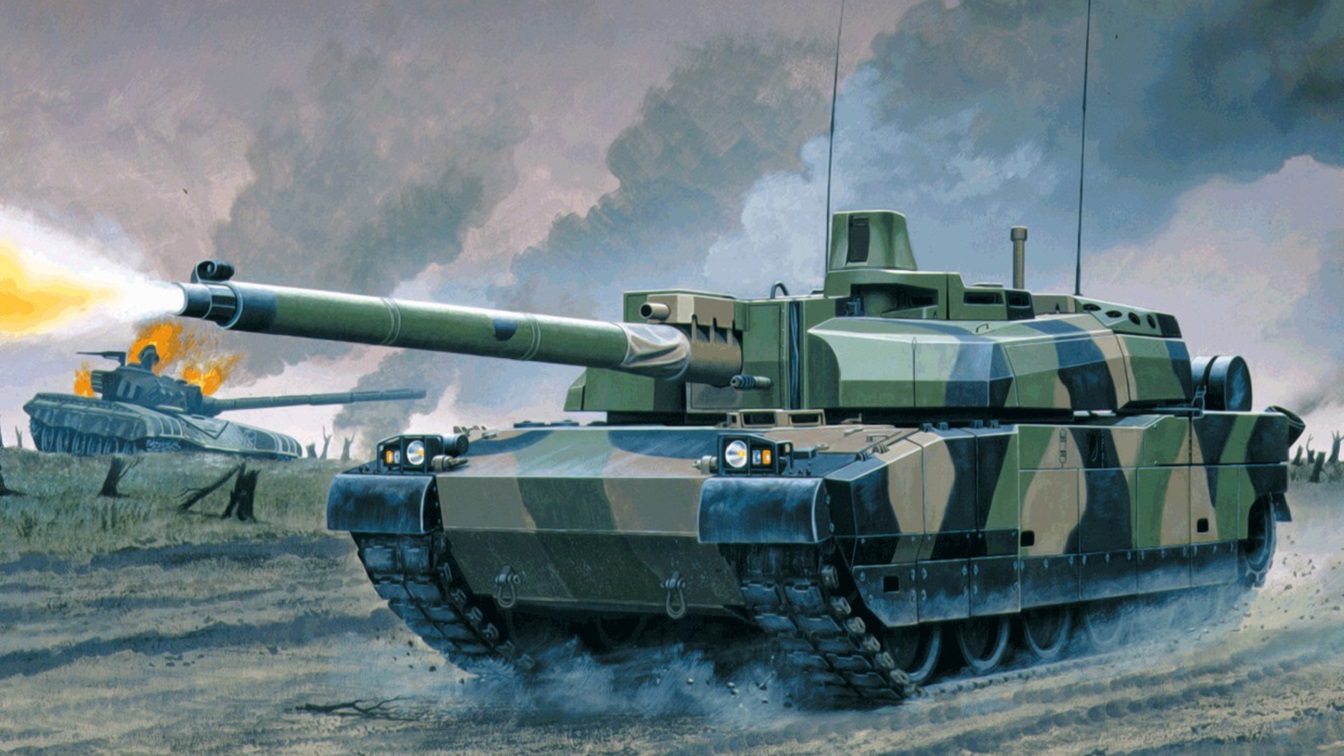The Leclerc tank might not be as well known as U.S. tanks like the M1 Abrams or even models like the T-90 from Russia. However, the French tank indeed is one of the best on Earth and would give any army on Earth a run for its money. We asked a top expert to explain just how influential this tank is:
The French defense contractor Nexter debuted its new variant of the Leclerc battle tank earlier this year. Featuring a series of advanced enhancements, the new XLR variant will unquestionably improve France’s armored corps’ capabilities. However, the Leclerc will be replaced by the jointly designed German-French Main Combat System by 2040.
Serving as France’s main battle tank (MBT), the Leclerc is considered to be one of the best operable vehicles in the world. Alongside the Leclerc, the American-made M1 Abrams, the German-made Leopard II, the British Challenger II, the Polish P91, and the Italian Ariete C1 make up the West’s main battle tanks.
The mainstay of France’s armored corps is named after the general who led the French element in the liberation of Paris in World War II, Marshal Philippe Leclerc de Hauteclocque. The battle tank replaced France’s AMX-30, which served the French army in combat missions since it initially entered service in 1966. During this timeframe, a Memorandum of Understanding between Germany and France was signed which outlined the joint development of a collaborative main battle tank. The potential joint tank would be called the Napoleon I in France and the Kampfpanzer III in Germany. However, the agreement never came to fruition and the French Army went on to create its own indigenously-made main battle tank.
What We Know: France Builds Its Own MBT
When the Ateliers de construction d’lssy-les-Moulinaeux (AMX) first designed the AMX-30, mobility was prioritized over all other functions. While the battle tank was speedy, it hosted a smaller frame, limiting the vehicle’s protection capabilities. The AMX-30 was a wildly successful export, sent across the world to Saudi Arabia, Venezuela, Chile, Greece, and other countries. By the 1970s, the AMX-30’s limitations and aging capabilities led the French Army to pursue an alternative main battle tank. At the time of its creation, the Leclerc was the most expensive battle tank in the world, costing over $9 million per vehicle in 2011.
The Leclerc’s primary armament is the GIAT CN 120-26, 52 caliber smoothbore gun, which is compatible with all NATO standard 120×570 mm ammunition. Battle tanks primarily are equipped with 44 caliber guns, giving the Leclerc’s projectiles a higher velocity.
The gun hosts a magnesium alloy thermal sleeve, the incorporation of the sleeve helps keep temperatures even along the barrel, preventing warping. Additionally, the tank features an auto-loader, which allows the gun to be loaded on the move with an eight-second-long firing sequence, which enables the tank to engage up to six targets in one minute. Weighing in at approximately 56 tons, the Leclerc is one of the lightest battle tanks in the world.
Leclerc’s Performance
In a 2019 inter-alliance military exercise in Latvia, the Leclerc joined tanks from eight other nations to carry out drills demonstrating full operational capability. Dubbed the Iron Spear exercise, crews from Spain, Italy, the UK, France, Germany, the U.S., and Poland trained together. By the end of the drills, the Leclerc emerged as the superior tank, surpassing all of its peers, including the American-made M1A2 Abrams. Although the Leclerc is less recognizable than its counterparts like the M1 Abrams and the British Challenger, the French tank is a powerhouse.
The new variant of the French main battle tank will elevate the Leclerc’s capabilities. According to Jane’s Defense, the new LXR unveiled at Eurosatory will be integrated into the Scorpion system, the French Army’s digital network.
The new variant will also feature the SICS combat information system from Atos. “This will allow voice and data to be exchanged simultaneously among network subscribers, vehicles (including Griffon, Jaguar, and VBL armoured vehicles), dismounted soldiers, and eventually Tigre (Tiger) Mk3 attack helicopters.” Additionally, the new LXR will sport superior protection “against improvised explosive devices and rocket-propelled grenades, as well as an FN Herstal 50-cal remote weapon system (RWS). The MLU will also deal with obsolescence issues, for example the fire-control computer authorizing the use of new 120 mm ammunition that is yet to be detailed and retaining the capability of the moving tank to hit static or mobile targets.”
While these improvements will bode well for the Leclerc’s performance, the French Army is still set to retire this main battle tank by 2040. France and Germany’s Main Ground Combat System (MGCS) project will replace the Leclerc and its German counterpart, fulfilling the Memorandum of Understanding agreement from decades earlier. The collaborative tank was first unveiled at the 2018 Eurosatory by a German arms industry company called Krauss-Maffei Wegmann & CO (KMW) and the France-based Nexter. The MGCS combines attributes from both the Leclerc and the German Leopard 2A7.
While the new French-German main battle tank will incorporate the best characteristics of both the Leclerc and the Leopard, its future role in combat is unknown. The French army has historically deployed light armored vehicles and air power in combat missions throughout the Middle East and Africa. Still, its arsenal of main battle tanks has not operated in combat since the Gulf War, at least not under a French flag.
Maya Carlin is a Middle East Defense Editor with 19FortyFive. She is also an analyst with the Center for Security Policy and a former Anna Sobol Levy Fellow at IDC Herzliya in Israel. She has by-lines in many publications, including The National Interest, Jerusalem Post, and Times of Israel.

